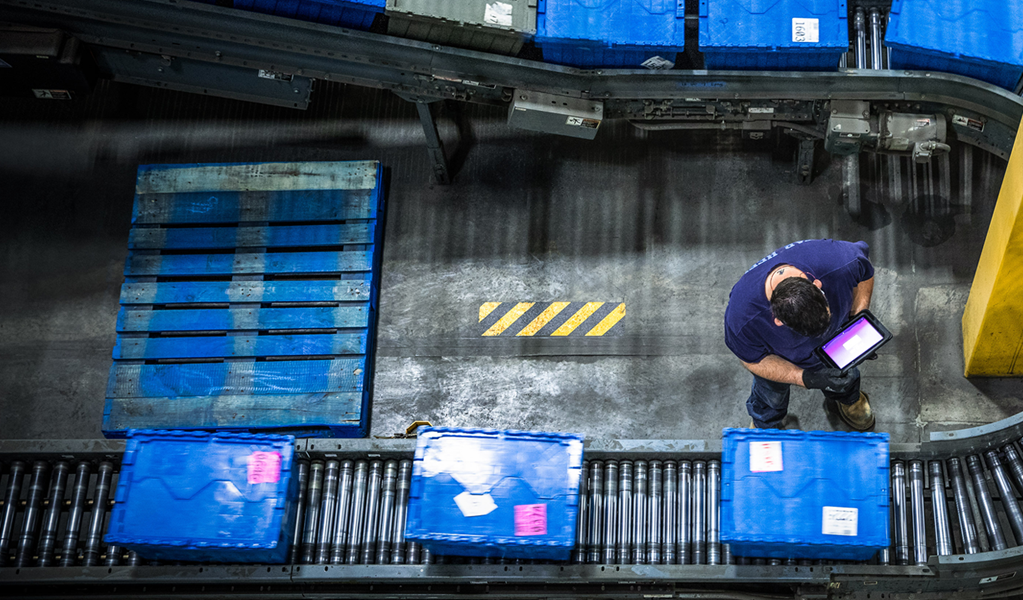Balancing Automation and Labor in Distribution Centers
What Is Warehouse Automation?
Warehouse automation refers to the use of technology to handle repetitive tasks in a warehouse or distribution center. This can include systems like:
● Robotic arms that move products
● Conveyor systems that transport packages
● Warehouse Management Systems (WMS) that track inventory
● Automated picking and sorting machines
When used properly, warehouse automation and distribution center automation can help streamline workflows, reduce human error and speed up order fulfillment.
Why a Balanced Approach to Automation and Labor Matters
While automation has significant benefits, it can’t do everything. Over-relying on machines without proper labor planning can lead to issues like:
● Employee disengagement and high turnover
● Workflow gaps when systems fail or slow down
● Lack of flexibility during peak demand
By treating automation and labor as two parts of the same strategy, companies can create a more balanced and effective operation. People bring adaptability, problem-solving and teamwork — things machines can’t replicate. Together, they ensure seamless operations even during challenging times.
Workforce Strategies That Support Automated Operations
Empowering Employees with Technology
When automation is strategically introduced, it helps employees do their jobs better. Machines can handle repetitive tasks, while workers focus on decision-making, troubleshooting and improving quality. By leveraging the strengths of both humans and machines, companies can achieve higher efficiency and innovation.
In fact, there are already a few ways people and automation collaborate effectively. Workers use hand-held scanners to track inventory through a Warehouse Management System (WMS), while technicians monitor robotics and step in when issues arise. Additionally, teams analyze real-time data to make smart decisions on the floor, ensuring seamless integration of human and automated efforts.
Training for Tech-Enabled Environments
As technology becomes more common on the warehouse floor, employees need training to keep up. Data from our Job Seeker Survey shows that in regard to hard skills, workers are primarily interested in improving their technical skills, or those abilities that can immediately help them in their current role. Enhancing employees' proficiency with workplace technologies benefits both their immediate performance and their long-term professional development.
Training programs can cover how to operate new automated systems, safety procedures in tech-driven environments and how to troubleshoot or reset common issues. These sessions not only enhance the workers' immediate productivity but also build their confidence in handling advanced technology. Over time, this approach fosters a culture of continuous learning and adaptation, essential for sustaining long-term growth.

Using Data and Automation to Drive Continuous Improvement
Warehouse systems and automation tools produce tons of valuable data. The best companies use this information to improve efficiency and catch problems before they grow.
Key metrics to track include:
● Throughput: how many items are moved per hour
● Downtime: how often machines stop working
● Error rates: how often mistakes are made
When using automation to make your operations more efficient, it’s important not to sacrifice quality and services standards. Consistently aligning these aspects ensures optimal performance while promoting growth.
Scaling Automation Without Sacrificing Workforce Stability
As businesses grow, their systems need to grow too. Scaling automation doesn’t mean cutting back on your team. In fact, having a stable, well-trained workforce becomes even more critical. Combining automation with strong training and upskilling, building flexible labor strategies that adapt to business needs, and partnering with workforce experts for long-term planning are essential steps to scale the right way.
Workforce and Automation for Long-Term Outcomes
The best way to run a thriving distribution center isn’t to pick automation over people. It’s to use both together. A well-balanced strategy keeps operations moving, employees engaged and businesses ready to adapt to what’s next.
Aerotek is here to help with workforce planning, on-site support and recruitment that aligns with your long-term goals. Contact us today to learn how we can support your success.
